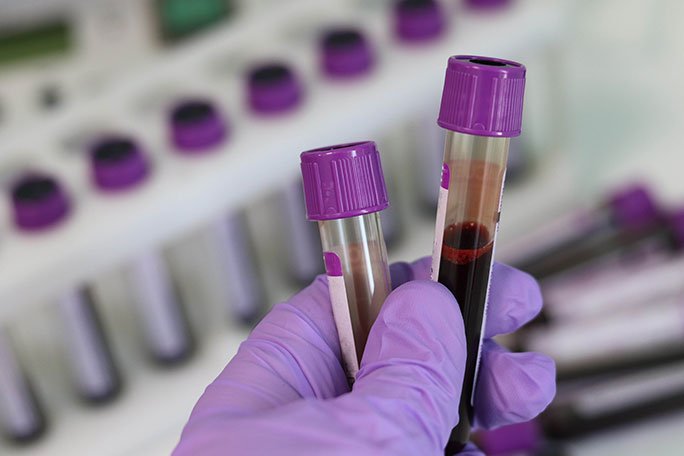Effective Strategies for Efficient Supply and Equipment Management in Hospitals
Summary
- Implementing a centralized inventory management system can help hospitals efficiently track and manage supplies and equipment.
- Utilizing barcode technology and automated tracking systems can improve accuracy and streamline the process of maintaining supplies.
- Regular audits, staff training, and collaboration with vendors can also contribute to effective supply and equipment management in hospitals.
Introduction
Hospitals in the United States face unique challenges when it comes to managing supplies and equipment. With the increasing complexity of healthcare services and the growing demand for medical resources, it is crucial for healthcare facilities to implement efficient strategies to track and maintain their inventory. In this article, we will explore various strategies that hospitals can adopt to ensure that their supplies and equipment are properly managed and readily available when needed.
Centralized Inventory Management System
One of the most effective strategies for hospitals to efficiently track and manage supplies and equipment is to implement a centralized inventory management system. By centralizing all inventory data in one system, hospitals can streamline the process of monitoring stock levels, tracking usage, and reordering supplies. This not only reduces the risk of stockouts and overstocking but also improves overall inventory accuracy.
Benefits of Centralized Inventory Management System
- Increased efficiency in inventory control and management.
- Enhanced visibility and transparency in Supply Chain operations.
- Improved decision-making based on real-time data and analytics.
Utilizing Barcode Technology and Automated Tracking Systems
Another effective strategy for hospitals to manage supplies and equipment efficiently is to utilize barcode technology and automated tracking systems. By assigning unique barcodes to each item and implementing automated tracking systems, hospitals can easily monitor the movement of supplies, track expiration dates, and reduce the risk of human error in inventory management.
Advantages of Barcode Technology and Automated Tracking Systems
- Improved accuracy in inventory tracking and replenishment.
- Streamlined Workflow and reduced manual data entry errors.
- Enhanced traceability and compliance with regulatory requirements.
Regular Audits and Reviews
In addition to implementing technology-driven solutions, hospitals should also conduct regular audits and reviews of their inventory management practices. By performing routine audits to assess stock levels, monitor equipment condition, and identify areas for improvement, hospitals can optimize their inventory control processes and ensure that supplies are properly maintained and readily available when needed.
Key Benefits of Regular Audits and Reviews
- Identifying and addressing Discrepancies in inventory records.
- Ensuring the proper storage and handling of supplies and equipment.
- Enhancing accountability and transparency in Supply Chain management.
Staff Training and Collaboration with Vendors
Lastly, hospitals can improve their supply and equipment management practices by investing in staff training and fostering collaboration with vendors. Training staff on proper inventory management techniques, equipment maintenance procedures, and technology usage can help reduce errors and improve overall efficiency. Additionally, partnering with vendors to establish Supply Chain agreements, negotiate pricing, and implement vendor-managed inventory solutions can further optimize supply and equipment management in hospitals.
Benefits of Staff Training and Collaboration with Vendors
- Enhanced knowledge and skills among hospital staff for effective inventory management.
- Improved communication and coordination with vendors to ensure timely delivery of supplies.
- Cost savings through streamlined procurement processes and inventory optimization.
Conclusion
In conclusion, hospitals in the United States can implement a variety of strategies to efficiently track and manage supplies and equipment. By adopting a centralized inventory management system, utilizing barcode technology and automated tracking systems, conducting regular audits and reviews, as well as providing staff training and collaborating with vendors, hospitals can enhance their Supply Chain operations and ensure that supplies are properly maintained and readily available when needed. These strategies not only improve efficiency and accuracy in inventory management but also contribute to better patient care and operational excellence in healthcare facilities.

Disclaimer: The content provided on this blog is for informational purposes only, reflecting the personal opinions and insights of the author(s) on the topics. The information provided should not be used for diagnosing or treating a health problem or disease, and those seeking personal medical advice should consult with a licensed physician. Always seek the advice of your doctor or other qualified health provider regarding a medical condition. Never disregard professional medical advice or delay in seeking it because of something you have read on this website. If you think you may have a medical emergency, call 911 or go to the nearest emergency room immediately. No physician-patient relationship is created by this web site or its use. No contributors to this web site make any representations, express or implied, with respect to the information provided herein or to its use. While we strive to share accurate and up-to-date information, we cannot guarantee the completeness, reliability, or accuracy of the content. The blog may also include links to external websites and resources for the convenience of our readers. Please note that linking to other sites does not imply endorsement of their content, practices, or services by us. Readers should use their discretion and judgment while exploring any external links and resources mentioned on this blog.
